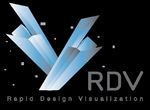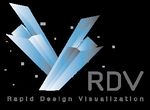To Pass or Not to Pass? - ANALYZE UNLIMITED MILES FOR (MUCH) LESS AND SAVE LIVES May 2021 - RDV Systems
←
→
Page content transcription
If your browser does not render page correctly, please read the page content below
To Pass or Not to Pass?
ANALYZE UNLIMITED MILES
FOR (MUCH) LESS AND SAVE LIVES
Introduction - Real Life Scenario
You’re stuck behind a slow moving truck on a long stretch of a two-lane highway. The
dashed centerline indicates that it’s safe to pass, and you edge left to see beyond the 18
wheeler. Your pulse quickens as you decide to go for it and press the gas. A car appears
somewhere ahead, and you speed up even more. You clear the truck, quickly return to your
lane and are thankful the harrowing ordeal is over.
ANALYZE UNLIMITED MILES FOR (MUCH) LESS AND SAVE LIVES 1Introduction
We’ve all experienced such passing anxiety, and whether we realize it or not, when
faced with the decision to pass we are essentially stressing over the question of
how accurate the passing zone markings are. Did they get it right?
With human lives at stake, transportation agencies such as the Utah Department of
Transportation (UDOT) concern themselves with this question on an onging basis
as they go through their multi-year cycles of refurbishing, repaving, and restriping
their roads.
Conventional Passing Zone Studies How It’s Done Today?
According to the National Highway Present day passing zone studies are
Transportation Safety Administration usually carried out by two vehicles
(NHTSA) approximately 95% of US car driving in tandem at a pre-calculated
accidents are caused by human error. distance deemed safe for passing. The
trailing car represents the passing car,
DOTs are continually spending money and the lead car represents oncoming
to restripe their roads as part of their traffic. The cars travel along the entire
regular multi-year road maintenance route in question and areas where the
cycles. Restriping can include Passing lead car is visible to the trailing car
Sight Distance (PSD) studies, particularly are considered safe for passing. Said
in areas where crashes and incidents have another way by a reputable engineering
been occuring more frequently. Considering firm, the common method of conducting
the fact that passing a car on a two-lane passing zone studies was described
highway is highly dependent on human as follows: “Currently, the established
factors, we might expect that the methods method is to estimate passing zones by
for determining where it is safe to pass, i.e., driving the corridor with two vehicles to
passing zone studies, would employ the determine where passing sight distance
most recent techniques and technologies. is available and where it is not.”
Regretfully, this isn’t the case.
ANALYZE UNLIMITED MILES FOR (MUCH) LESS AND SAVE LIVES 2The Challenges
As you can imagine, this method has many challenges, both from a safety
perspective and from a DOT’s economic perspective. Some of the challenges
include:
Labor – Current models require you to Rapid Obsolescence – Passing zone
physically traverse each mile in the study. studies can become obsolete because of
changes such as increased speed limits,
Cost – Conventional passing zone studies changes in foliage, commercial growth,
are charged by the mile, and with human etc.
involvement, can be quite costly.
Reactive – DOTs usually run passing
Limited Scope – Because of the expensive zone studies where crashes have already
and limited resources involved, it is not occurred, rather than using an proactive
economical to do such studies across all road approach that predicts where crashes are
sections. While many sections may not require likely to occur.
studies, it is likely that amongst the thousands
of miles under a DOT’s responsibility, some Inflexibility – The analysis is conducted
sections that should be analyzed will be using certain parameters, and it isn’t
passed over and some other basis will be used practical to redo a test with a different
for striping, such as maintaining the existing set of starting parameters or to run the
striping. analysis multiple times.
Maximum Speed, Unlimited Mileage, Cutting-Edge
Technology, and Affordable - Like every DOT’s dream car
While progress often occurs
in small incremental steps,
technology occasionally affords
a giant leap forward. When it
comes to passing sight distance
studies, RDV’s Road Safety Audit
3D is a clear case of the latter.
After years of collaboration with
DOTs and other infrastructure
professionals across the US and
the globe, we at RDV are keenly
aware of their safety related Detailed RSA 3D Report
pains and needs such as those caused by traditional passing zone study analysis
practices and tools. Road Safety Audit 3D is our response, bringing automation
and 3D visual analysis to a cumbersome and manual, very low-tech process.
ANALYZE UNLIMITED MILES FOR (MUCH) LESS AND SAVE LIVES 3In the context of passing zone studies, RSA 3D couples LiDAR data of a road’s
topography, or an existing 3D model with RDV’s best-in-class visualization
engine, to simulate passing sight distance measurements at accuracy levels far
beyond those of conventional methods. By using RSA 3D, DOTs gain substantial
advantages that simply aren’t available with conventional passing zone studies.
Scalability Affordability Flexibility Repeatability Speed
Analyze as many miles of Cost effective process that Ability to change variables Ability to redo studies when Results are generated in
roads as there is data for. fits within any budget. as needed. conditions change. mere hours, not weeks.
A New Approach to an Old Problem
Earlier on, we explicitly mentioned the Utah Department of Transportation.
UDOT has taken a strong interest in the RSA 3D suite of applications and has
worked with RDV on a number of occasions. As UDOT is nearing the kick-off of
a new resurfacing and restriping cycle for the many thousands of miles of roads
under its responsibility, they are looking again to RDV to help them improve
accuracy, reduce costs, and increase the scope of the passing zone studies
included in this process.
To this end, UDOT engaged a third party to evaluate RSA 3D as compared to
conventional two-car PSD analyses. Using UDOT’s LiDAR data, RDV analyzed
several sections of road selected by UDOT’s safety team, and produced results
that were found to correlate closely to conventional results.
“The passing zones as determined by RDV do line up with the passing zones
identified by the study.” (from evaluation report)
ANALYZE UNLIMITED MILES FOR (MUCH) LESS AND SAVE LIVES 4“...using the LiDAR data may provide a more precise analysis and may result in less
man-hours being used to complete a study.” (from evaluation report)
RSA 3D Technology in Action!
Play this video to experience a
passing sight distance simulation on
one of UDOT’s highways. Keep your
eye on the ball - when it disappears
it isn’t safe to pass
Click here to play video
Passing Zone Analysis with Sight Lines - Examples
See RDV’s PSD Analysis of SR-150 in Utah in action! The green sight lines are an indication that it is
SAFE to pass and the red sight lines are an indication that is NOT SAFE to pass.
ANALYZE UNLIMITED MILES FOR (MUCH) LESS AND SAVE LIVES 5About RDV’s Software and Services
RDV Systems has been delivering innovative visualization, BIM software, and
Road Safety products since 2005. Our mission is to help engineers, designers,
architects and planners communicate proposed projects quickly, effectively and
easily at a cost that makes visualization and analysis feasible for projects of any
size. Consultants and public agencies around the world rely on RDV software
products and services to visualize, analyze and communicate their designs.
RDV’s patented technologies make visualization and Road Safety Audit 3D a
rapid and affordable process that becomes an integral part of the entire project
lifecycle. Whether your projects involve roads and highways, rail infrastructure,
airports, ports and harbors, land development, municipal infrastructure, urban
planning, landscape architecture, mining or plant and power, RDV helps you
succeed in your projects, analyze sight distance, shorten approval time and gain
public support when you can’t afford to be misunderstood.
Do You Have An Upcoming Passing Zone Study to Conduct?
Contact RDV Systems Today:
www.rdvsystems.com
(970)-222-7557
larry.mohr@rdvsystems.com
RDV Systems—when you can’t afford to be misunderstood!
ANALYZE UNLIMITED MILES FOR (MUCH) LESS AND SAVE LIVES 6You can also read


























































